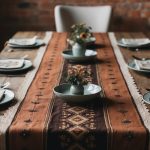The Best Home Decor Trends That Will Never Go Out of Style: Timeless Design Ideas
Layered Lighting
Incorporating layered lighting into a home involves combining different light sources to create a cohesive and functional lighting plan. This approach ensures spaces are well-lit, practical, and aesthetically pleasing.
Ambient Light Sources
Ambient lighting serves as the primary source of light in a room, providing overall illumination. It often comes from ceiling fixtures such as chandeliers, recessed lights, or flush mounts. These fixtures are essential for setting the tone and ensuring a room feels inviting and comfortable.
Natural light can also act as an ambient light source. Large windows and skylights that allow sunlight to fill a space are both effective and energy-efficient.
For even light distribution, consider using dimmable options to adjust the brightness as needed throughout the day and night. This versatility helps in creating a comfortable atmosphere no matter the time.
Task Lighting Essentials
Task lighting focuses on providing adequate illumination for specific activities such as reading, cooking, or working. Effective task lighting reduces eye strain and enhances productivity.
Examples include desk lamps in a home office, under-cabinet lighting in the kitchen, or reading lamps beside a bed. These sources should be positioned to eliminate shadows and provide focused light.
Choosing the right type of bulb for task lighting is crucial. LED bulbs are often preferred for their energy efficiency and bright, consistent light. For activities requiring high precision, higher lumens can be beneficial.
Accent Lighting Fixtures
Accent lighting adds drama and highlights specific features within a space. It can be used to draw attention to artwork, architectural details, or beautiful furniture pieces. This type of lighting is more about creating visual interest than providing functional light.
Wall sconces, picture lights, and track lighting are popular choices for accent lighting. These fixtures can be adjusted to focus light exactly where it’s needed, enhancing the design elements of a room.
The interplay between shadows and light created by accent lighting can add depth and dimension, making spaces feel more dynamic and stylish.
Natural Elements
Integrating natural elements into home decor brings a touch of warmth and authenticity to any space. This approach focuses on indoor plants, wooden accents, and stone or clay items, which collectively create a harmonious and grounded living environment.
Indoor Plants and Greenery
Indoor plants bring life and color to interiors, making spaces more inviting. They improve air quality by filtering pollutants, enhancing overall well-being. Popular choices include fiddle leaf figs, snake plants, and succulents, as they require minimal maintenance.
Strategically placed greenery can transform a room, whether it’s a large potted plant in a corner or small potted herbs on a windowsill. Using varied planters made from terracotta, ceramics, or metal can add visual interest and complement other decor elements.
Blending different plant heights and leaf textures creates depth and dimension. Hanging planters or vertical garden walls are excellent for smaller spaces, providing a lush look without occupying floor space. Proper lighting and watering are crucial for maintaining healthy plants, so choose varieties that suit your home’s conditions.
Wood and Wicker Accents
Wood and wicker bring warmth and texture to interiors, making them essential natural elements. Furniture such as wooden tables, chairs, and bed frames exude timeless elegance. Hardwoods like oak, maple, and walnut are durable and offer rich grain patterns.
Wicker adds a casual, airy feel to spaces. It’s commonly used in baskets, chairs, and even light fixtures. Combining wood and wicker can create a balanced and cohesive look. For instance, pairing a wicker chair with a wooden side table adds texture and depth.
Decorative wooden items like carved figurines, bowls, or photo frames can add personality to your decor. Incorporating different wood tones, from light to dark, can create a layered and dynamic appearance.
Stone and Clay Decoratives
Stone and clay elements add a rustic and earthy touch to home decor. Items like stone tabletops, fireplaces, and clay pottery are durable and exude natural beauty. Stone comes in various forms, from sleek marble to rugged slate, each offering unique qualities.
Clay decoratives, such as vases, bowls, and sculptures, introduce organic shapes and textures. Handcrafted pieces often carry unique patterns and finishes, adding artistic value. Mixing polished and unpolished stone surfaces can create interesting contrasts.
For a subtle incorporation, consider clay or stone accents like coasters, candle holders, or small sculptures. These materials add a tactile element that enhances the sensory experience of a space, making the environment feel more grounded and serene.
Wall Decor Staples
Wall decor plays a crucial role in enhancing the aesthetic appeal of any home. Iconic choices like framed art, wall moulding, and mirror accents remain timeless.
Classic Framed Art
Classic framed art never goes out of style. This type of decor offers versatility, allowing homeowners to choose from various genres and artists that suit their taste. Whether it’s a famous painting or a personal photograph, framing adds a touch of elegance and sophistication.
It’s important to consider the frame’s material and color as they should complement the art piece and the room’s design. Simple black, white, or wooden frames are popular options that blend seamlessly with most interiors.
Arranging framed art in a gallery wall or as a focal piece above furniture helps draw attention and creates a visually appealing space. Regularly updating or rotating the artwork can refresh the room’s look without a complete overhaul.



